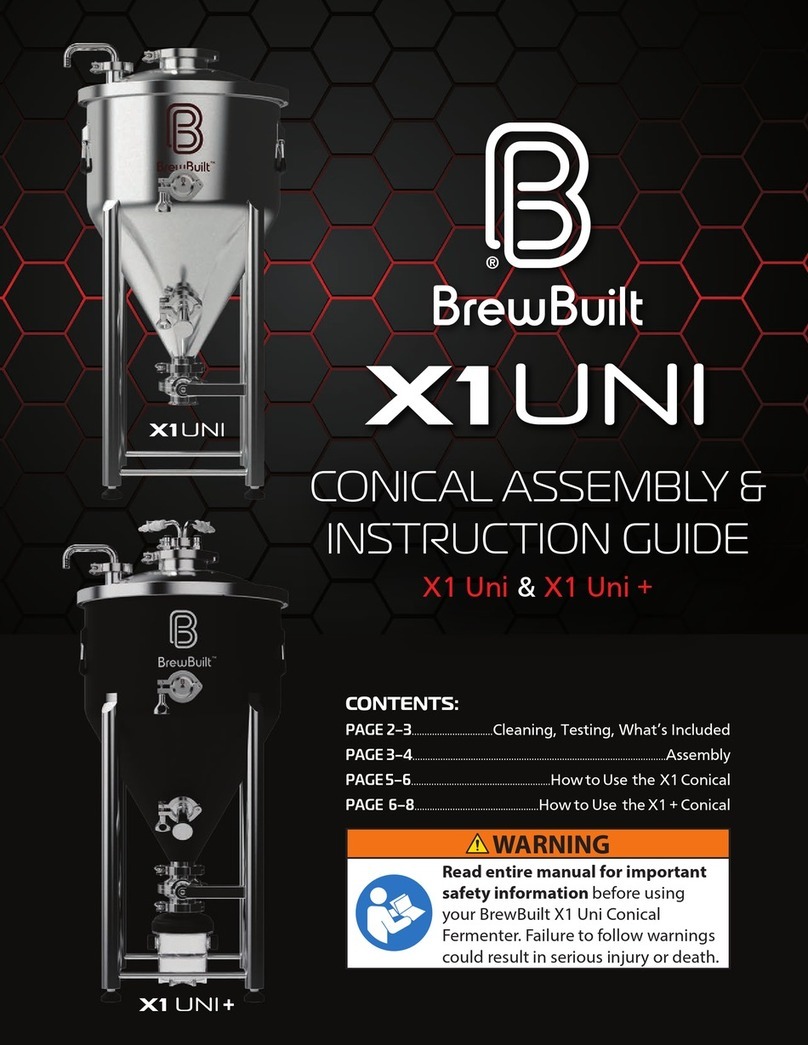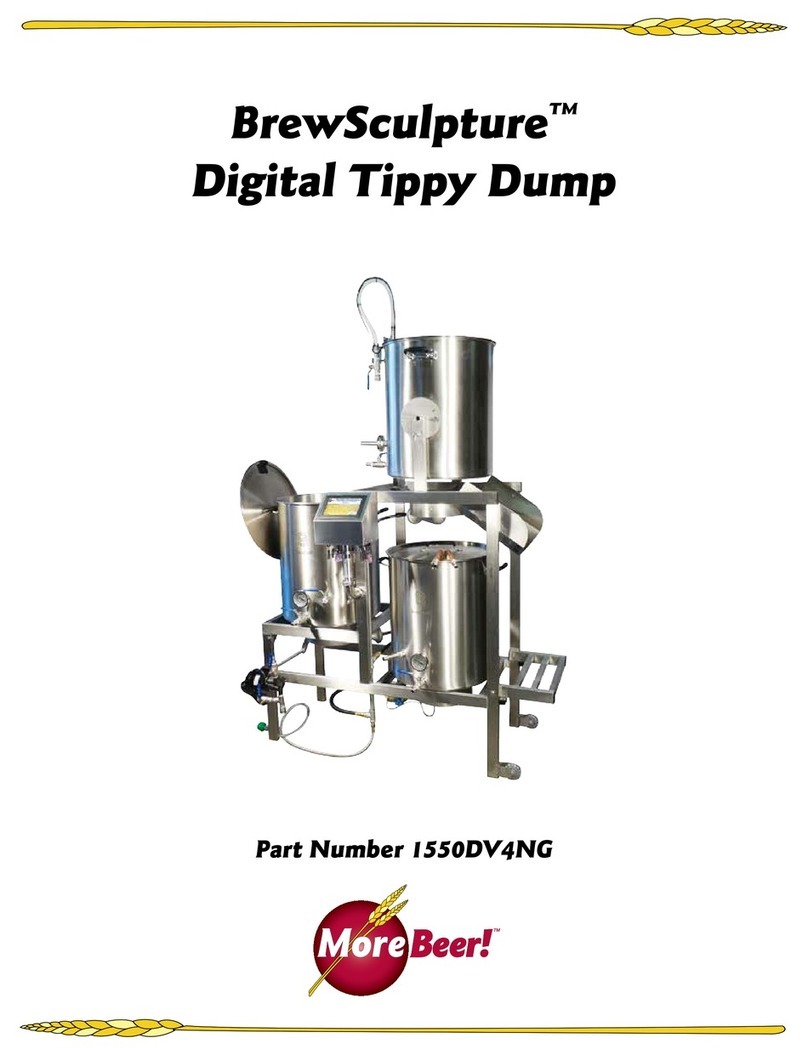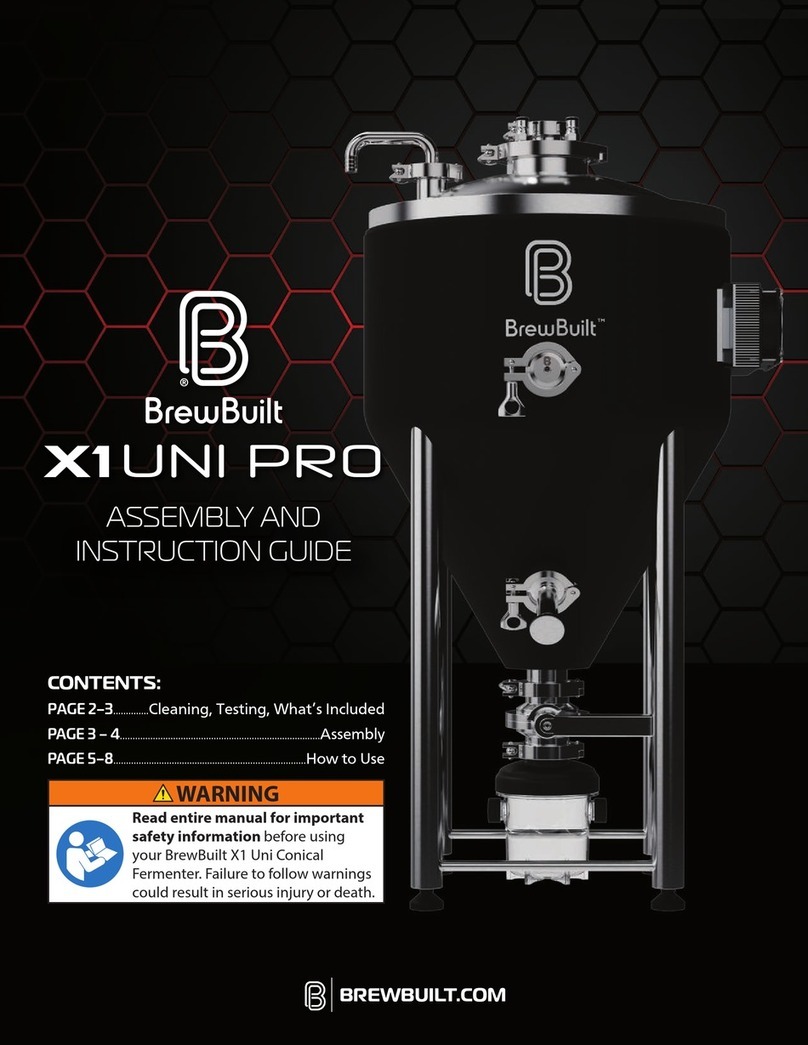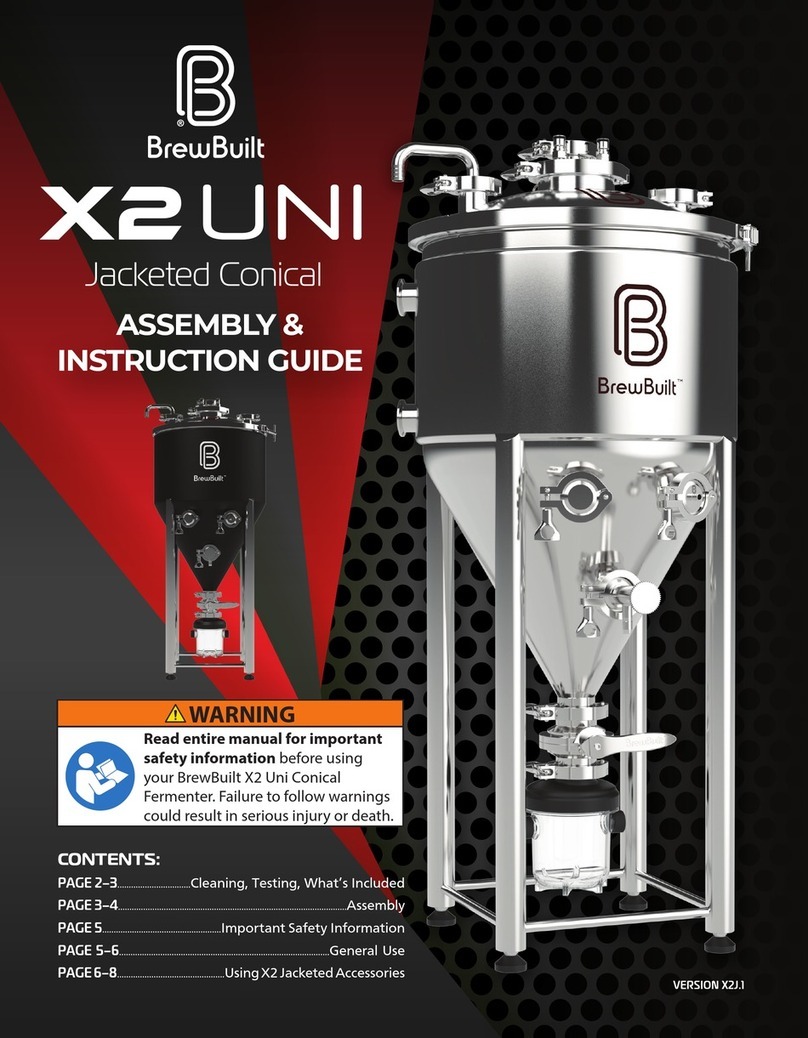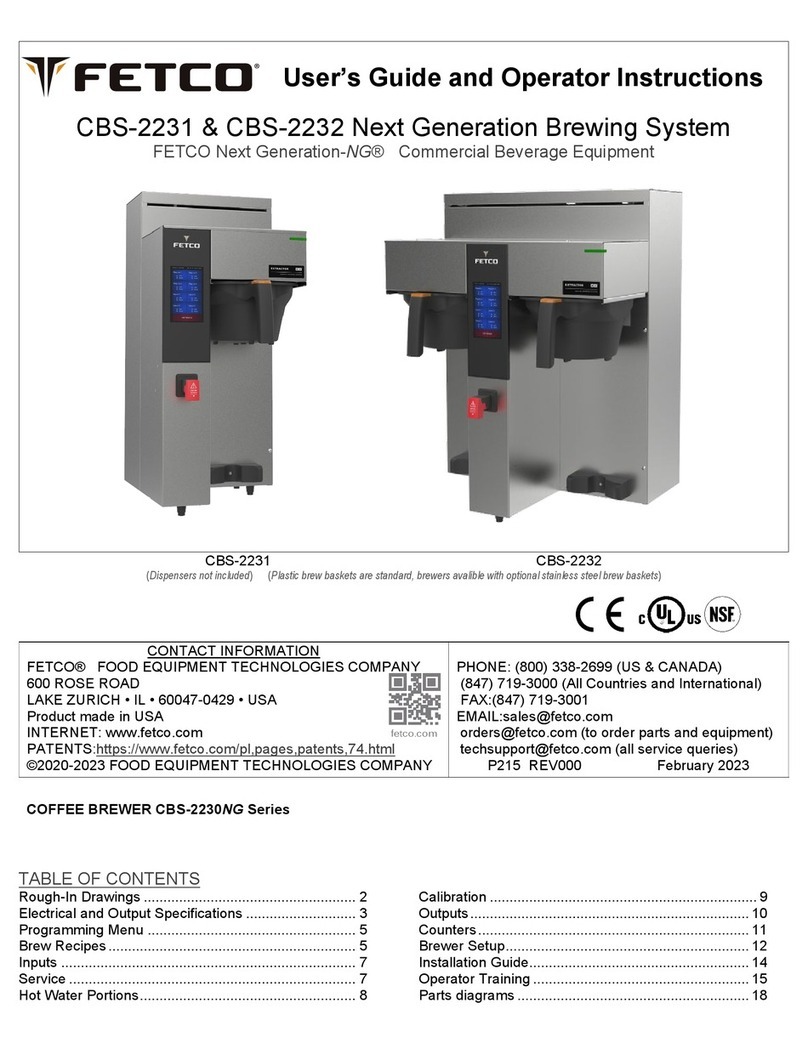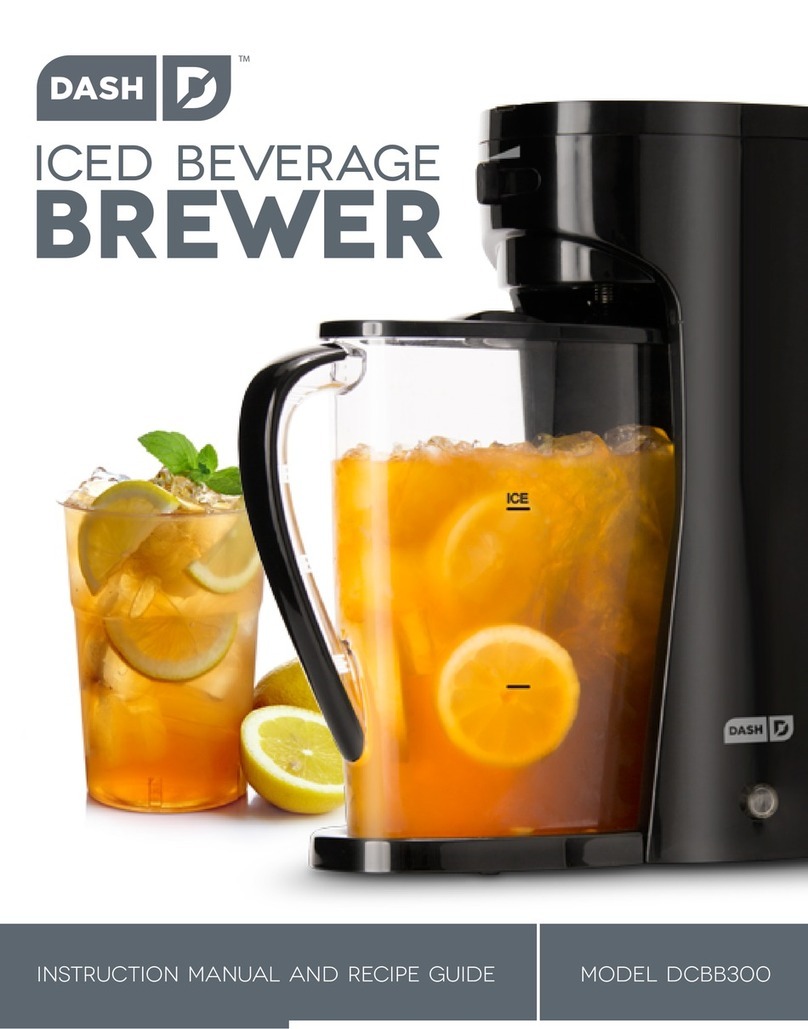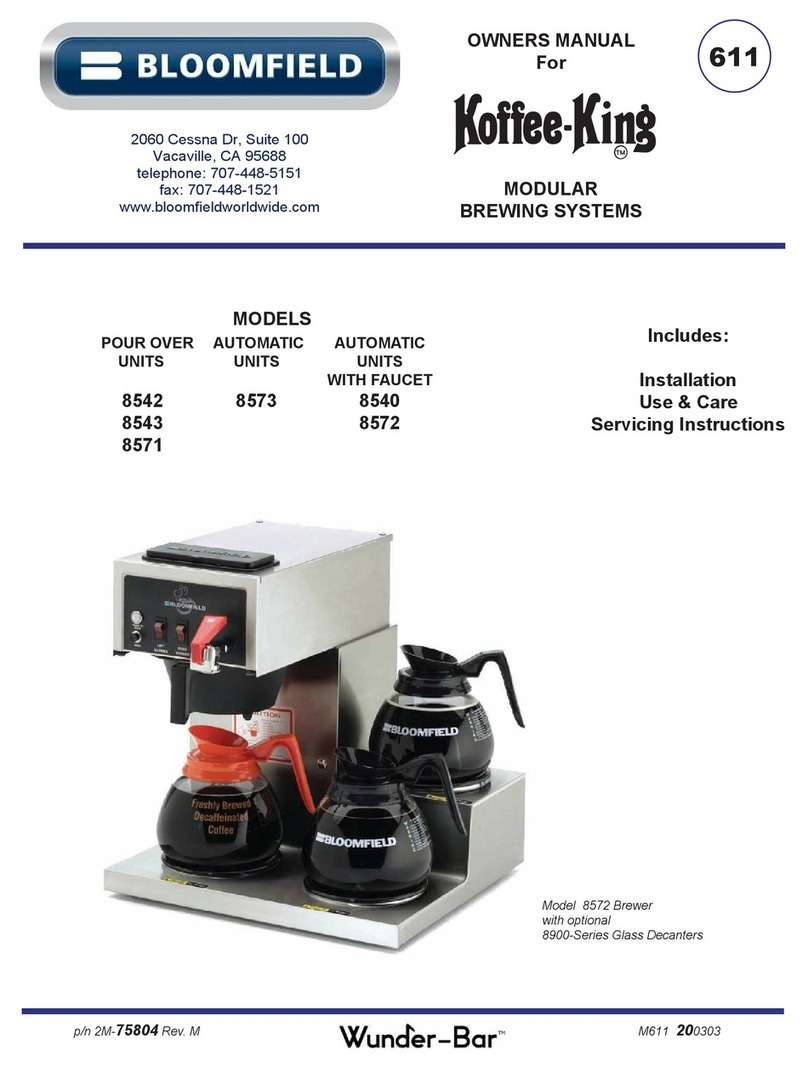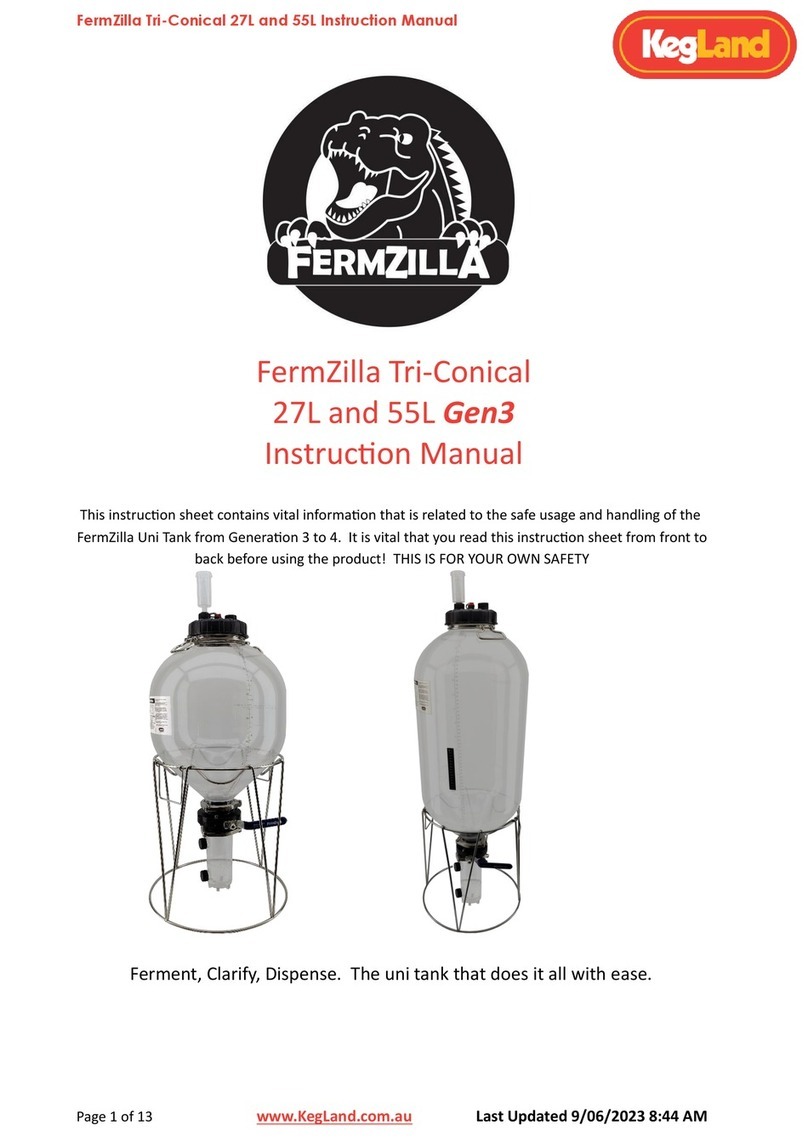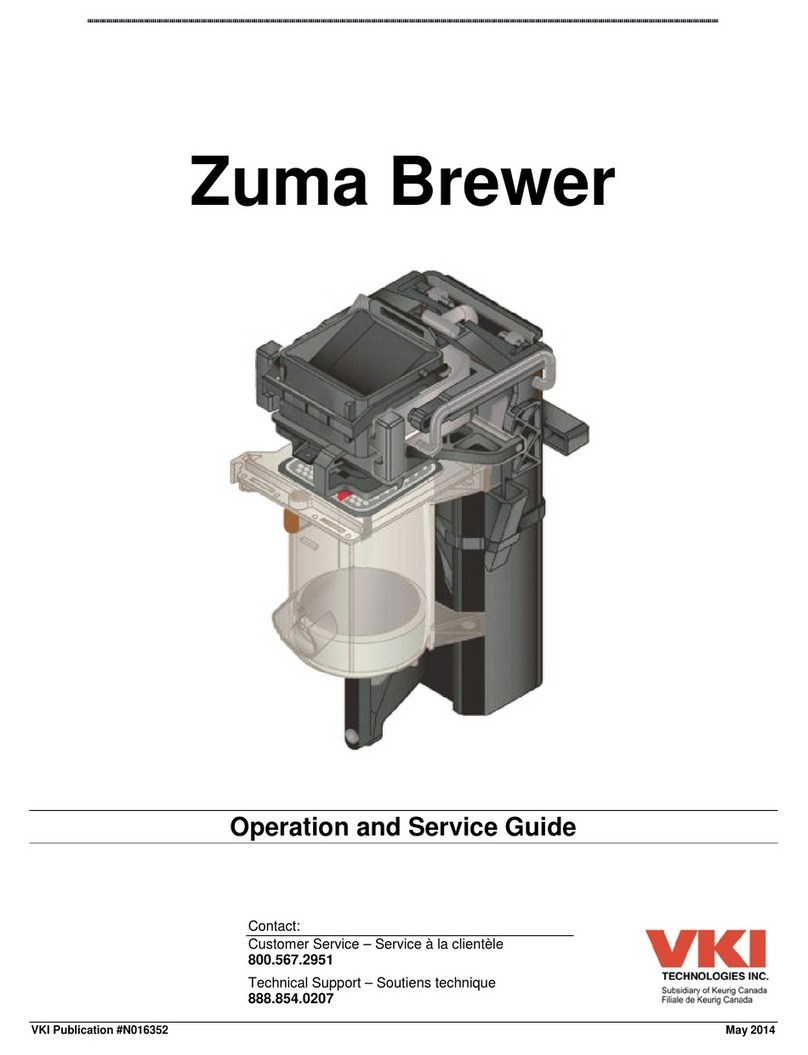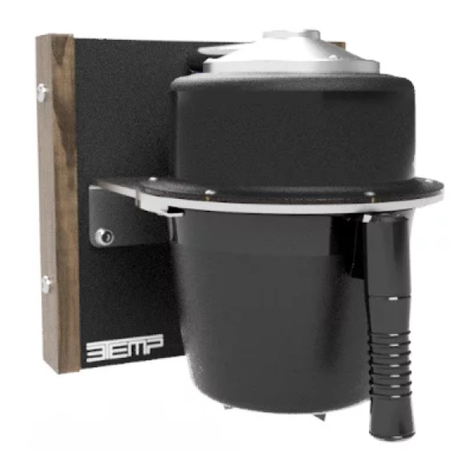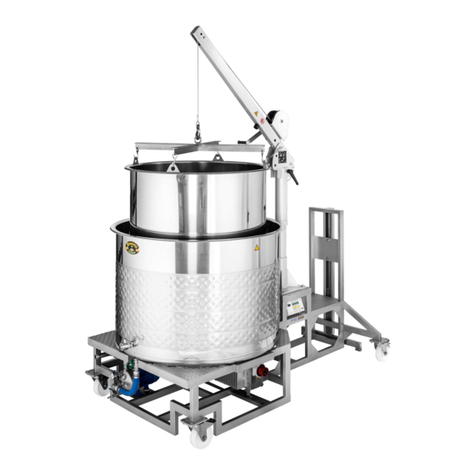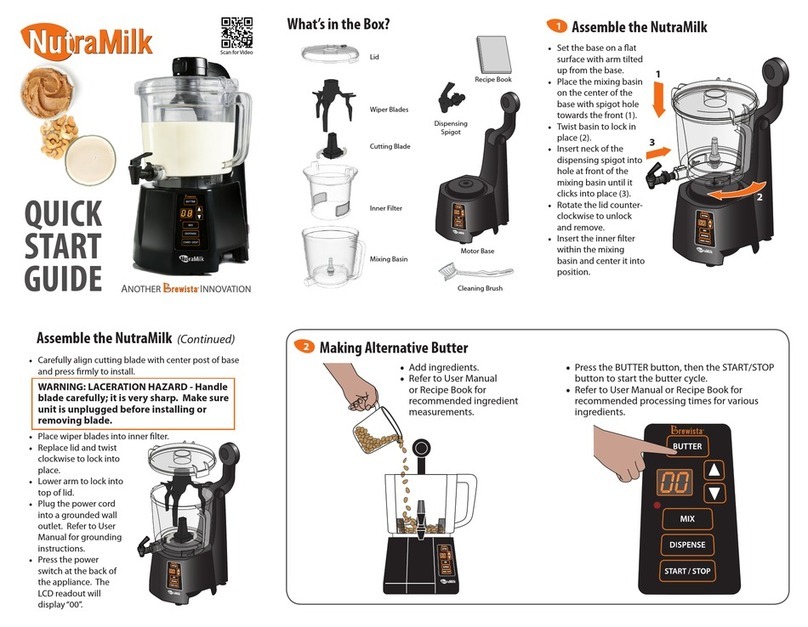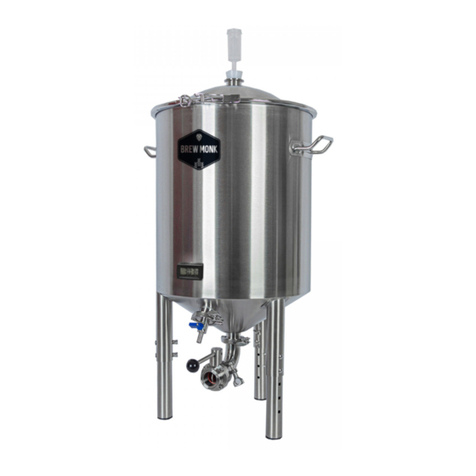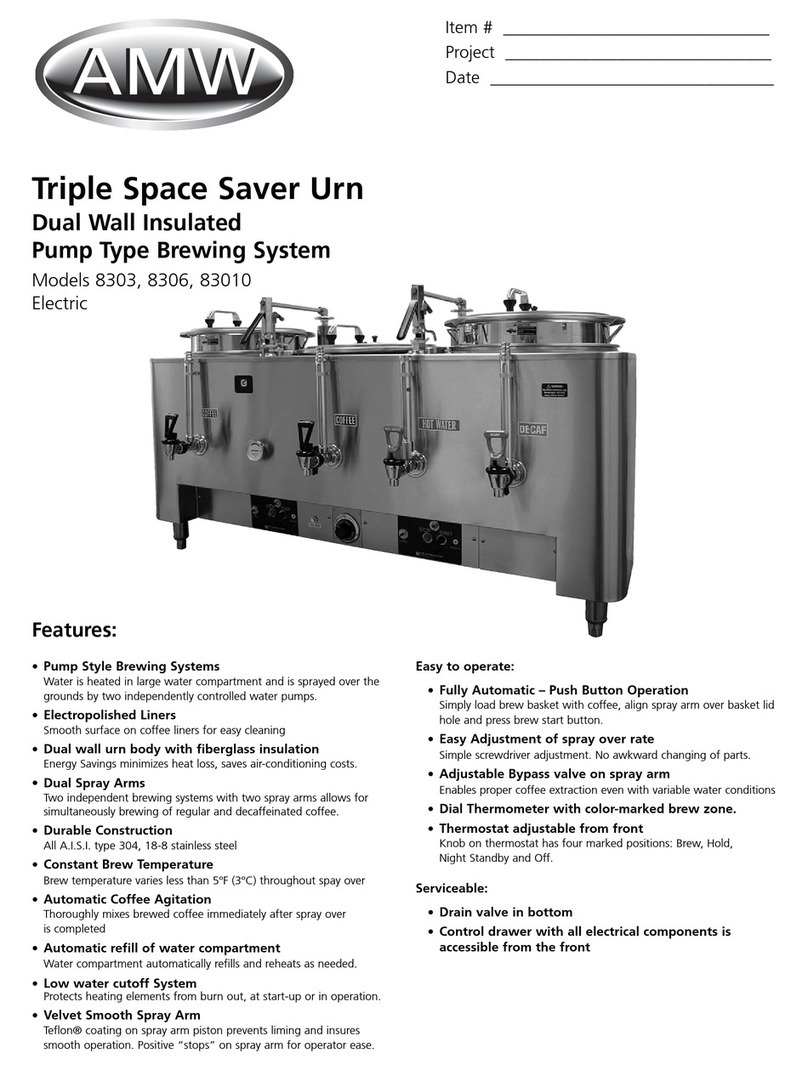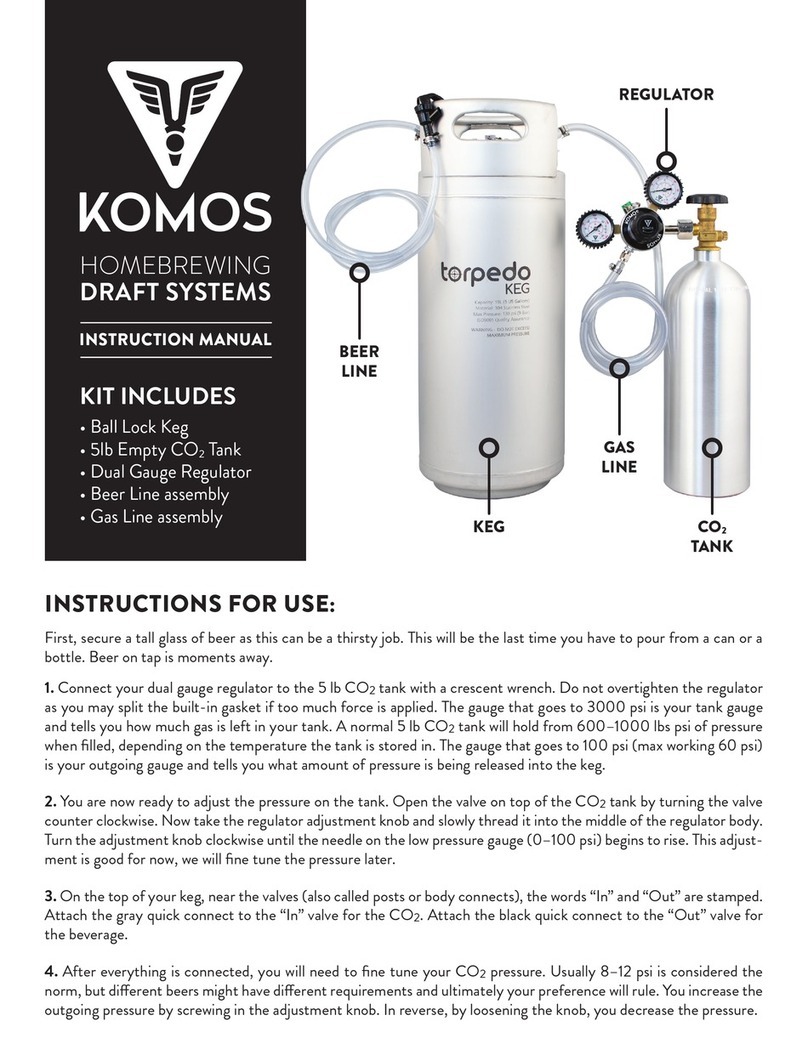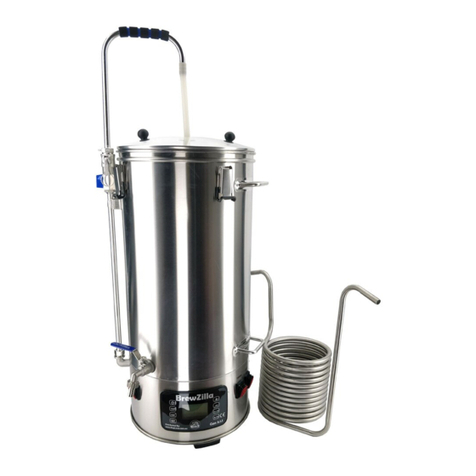
Cleaning is one of the last things that anyone wants to do aer nishing
a brew day, but anybody that’s put it o before will tell you, it’s much
easier to do right aer the brew rather than waing unl your next brew!
Please make sure to remove and unplug all of the temperature and oat
switches at this point in me.
Generally speaking, the hot liquor tank will not need to be cleaned, but
may need to be dried out/wiped down, as nothing but water is ever held
in this kele. Removing and cleaning the maximizer, ball valve assembly,
sparge ring, and thermometer is highly recommended aer every brew.
The mash tun will need to be emped, and having a scoop, mash pad-
dle, or spoon will allow you to scoop the grain out of the mash tun unl
it is light enough to dump out. This grain will probably sll be hot, so
be careful not to dump it onto yourself or anyone else. Once most of
the grain has been dumped, remove the thermometer and false boom,
and clean these o (do not submerge the thermometer face into water).
Remove the maximizer, but leave the ball valve installed. Fill the kele
with 2–3 gallons of water and scrub any sugars or grains o the kele
walls with a white scrub pad (our part number CE27) or wash cloth and
StarSan. Once the kele looks clean and there are no more sugar or grain
spots, you can empty all water and remove the ball valve assembly. All
of the subparts of your keles (other than the thermometers) should be
placed in a bucket of PBW water and allowed to soak for 10–15 minutes.
PBW will help to break down any residual sugar or wort on these parts,
and will make them easier to un-thread and keep clean.
Your boil kele will most likely have some foam residue, hop material,
and trub adhering to the walls and boom. There will also most likely
be some liquid le over from the boil, so we recommend dumping that
out, then spraying and wiping the kele down with a hose and scrub pad
unl all visual dirt, hops, and residual sugar have been removed. Aer the
kele appears clean, remove the ball valve assembly, thermometer, and
whirlpool maximizer from inside the kele. Again, other than the ther-
mometer, these should be placed in your PBW bucket and allowed to soak.
Cleaning and drying your keles and frame shouldn’t be too dicult.
Something to keep in mind is that cleaning your equipment right away
will make it easier, and will help keep your BrewSculpture™looking
newer for longer. Aer your brew day, clean up your equipment as soon
as possible! To allow your keles to completely drain/dry out, you can
keep them stored upside down on the stand with their lids resng on top
(the boom of the kele). Always try to store your BrewSculpture™in the
best condions possible. Every 5–6 months it is probably a good idea to
check your thermometers’ calibraons. They most likely have remained
accurate, but double checking is easy and never hurts. To calibrate, you’ll
need to have a 1/16" hex key. This will go into the hex nut on the side of
the thermometer, and will adjust the face of the thermometer. While the
probe is in a bath of ice water, check to make sure it’s reading 32–33°F. If
not, adjust the hex nut unl it is. Then, place the probe in boiling water
and make sure the thermometer is reading 211–212°F NOTE: Boiling
temperature is variable by elevaon. Please calibrate the thermometer
accurately to your personal elevaon’s boiling temperature. Outside in a
snow storm or ood is not an ideal storage spot – a garage is!
Queson: I connected all of the tubing as suggested in this manual, but
even with all of the ball valves completely open, I can’t get the pump to
move the wort! How should I proceed?
Answer: The pump is not great at moving air, but is excellent at moving
liquid! The pump assembly will have a “tee” ng on it, with a ball valve
on that tee. Try priming the lines by opening and re-closing this ball valve
(with a bucket underneath it…). This will get the pump head full of liquid
hopefully, and the air in the rest of the lines should get pushed out by
this liquid. If this doesn’t completely solve the problem, try closing the
pump’s outlet ball valve, remove the tubing, and open / close that valve.
Aer you get a steady stream of liquid exing, re-aach the tubing and
turn the pump on. Just remember – the pump pushes, but does not pull.
It will not suck liquid from one vessel and move it to another, so always
have gravity working in your favor to feed the pump.
CLEANING & SANITIZING
FAQ
11












